Purple vegetables feature a vibrant purple hue that comes from anthocyanins, natural pigments that give plants their red, purple, and blue colors.
Here, I’ll cover 24 different kinds of purple veggies, each with distinct flavors and textures. They belong to different categories, such as leafy greens, tubers, roots, cruciferous vegetables, and more.
These vegetables enhance your meals by adding color and nutrients to diverse dishes and beverages. Indeed, anthocyanins have antioxidant properties. Studies indicate that anthocyanins can lower cancer risks and boost brain function.
Therefore, consuming purple vegetables offers numerous health benefits. They are also packed with vitamins, minerals, and fiber, which support heart health, digestion, and the immune system.
Interestingly, some purple vegetables are actually fruits, so ensure you’ll read all the insights to learn more about these natural foods.
Purple vegetables feature a vibrant purple hue that comes from anthocyanins, natural pigments that give plants their red, purple, and blue colors.
Here, I’ll cover 24 different kinds of purple veggies, each with distinct flavors and textures. They belong to different categories, such as leafy greens, tubers, roots, cruciferous vegetables, and more.
These vegetables enhance your meals by adding color and nutrients to diverse dishes and beverages. Indeed, anthocyanins have antioxidant properties. Studies indicate that anthocyanins can lower cancer risks and boost brain function.
Therefore, consuming purple vegetables offers numerous health benefits. They are also packed with vitamins, minerals, and fiber, which support heart health, digestion, and the immune system.
Interestingly, some purple vegetables are actually fruits, so ensure you’ll read all the insights to learn more about these natural foods.
24 Healthy Purple Vegetables
Discover 24 purple vegetables with information, from their shape to their nutritional benefits. They are also easily sorted with the filter system.
Eggplant
- For Dishes
Eggplant, aka aubergine, is the most common purple vegetable worldwide. This nightshade vegetable has a glossy, deep-purple skin and spongy flesh. It’s a favorite ingredient in many cuisines, including Mediterranean, Asian, and Middle Eastern.
Eggplan’s ability to absorb flavors makes it pair well with other foods, from meat to spices. It’s an important component in ratatouille, eggplant parmesan, and baba ganoush. It’s also ideal for vegetarian and vegan dishes, providing a hearty alternative to meat.
Eggplants are rich in antioxidants, particularly nasunin found in the skin, which helps protect cells from damage. This vegetable is also low in calories and high in fiber.
Purple Cauliflower
- For Dishes
Purple cauliflower is a colorful variety that gets its rich purple color from anthocyanins, the same antioxidants found in red cabbage and blueberries. These compounds give the veggie a striking appearance and provide anti-inflammatory and heart-healthy properties.
Like regular varieties, purple cauliflower’s mild, slightly nutty flavor is ideal for roasted, steamed, and sautéed dishes. You can even eat it raw in salads.
Purple cauliflower is an excellent source of vitamins C and K, which are important for immune function and bone health.
Purple Cabbage
- For Dishes
- For Garnishes
Purple cabbage, aka red cabbage, is a cruciferous vegetable packed with anthocyanins, powerful antioxidants that give the cabbage this color.
The cabbage has deep purple and crunchy leaves with a slightly peppery flavor. It can complement various dishes, like salads, slaws, and stir-fries. It’s also fermented to make sauerkraut or added fresh to tacos and sandwiches.
Additionally, its vibrant color can act as a natural indicator of pH levels, changing hues when exposed to acidic or alkaline substances.
Purple Carrot
- For Dishes
Originating from regions of Central Asia, purple carrots are known for their unique color and sweet, earthy flavor.
These carrots add a colorful touch to salads, soups, and stir-fries, adding visual appeal to dishes from gourmet cuisine to home-cooked meals. Whether roasted, juiced, or eaten raw, purple carrots are surely a delicious ingredient to your meals.
They also have an impressive nutritional profile with high levels of vitamins A and C, dietary fiber, and antioxidants that make them have this purple color.
Purple Potato
- For Dishes
Another well-loved veggie with this color is purple potatoes. Hailing from the Andean region of South America, these tubers thrive in high-altitude, cool climates, especially in regions like Peru and Bolivia.
When selecting purple potatoes, you should look for firm, smooth skins without blemishes, which indicate freshness. Their earthy, slightly nutty flavor pairs well with various ingredients, from garlic and herbs to more robust flavors like cheese and bacon.
You can roast, mash, or use these potatoes in salads to add colors to regular dishes. They are also rich in vitamins C and B6, potassium, and dietary fiber, making them a nutritious choice for any meal.
Purple Sweet Potato
- For Dishes
Purple sweet potatoes are another tuber with a deep purple flesh due to anthocyanins. Purple sweet potatoes offer a slightly sweeter taste than their regular counterparts, making them fit in both sweet and savory dishes.
They can be roasted, mashed, baked, or even turned into colorful desserts. Regarding the healthy advantages, the antioxidants in purple sweet potatoes help combat oxidative stress, reducing the risk of chronic diseases.
Purple Kale
- For Dishes
Purple kale is a leafy green with a slightly peppery flavor. This veggie adds a delightful crunch to salads and smoothies. It’s also versatile enough to be baked into chips, making it a nutritious snack.
Purple kale is packed with antioxidants, vitamins A, C, K, and antioxidants. The vibrant color also indicates a high concentration of phytonutrients, beneficial compounds that protect against various diseases.
Purple Broccoli
- For Dishes
Purple broccoli, often called purple sprouting broccoli, is another cruciferous vegetable prized for its tender stems and mildly sweet flavor. It can be steamed, roasted, or stir-fried, retaining its vibrant color when cooked properly.
This broccoli variety is particularly popular in European cuisine. Rich in vitamins C, K, and A, fiber, and folate, purple broccoli is a good addition to a well-rounded diet, promoting immune function and bone health.
Purple Lettuce
- For Dishes
- For Garnishes
Originating from Mediterranean regions, purple lettuce is a leafy vegetable with vibrant color and a crisp texture. Famous varieties of this lettuce are Lollo Rosso and Red Leaf.
The lettuce has a slightly bitter, nutty flavor and pairs well with other foods. Their leaves are a common addition in salads, sandwiches, wraps, garnishes, and other fresh dishes.
It’s low in calories yet rich in essential nutrients like vitamins A and K, vital for eye health and blood clotting. Additionally, it provides a good source of dietary fiber, promoting digestive health and helping to maintain a healthy weight.
Purple Bell Pepper
- For Dishes
- Fruit Vegetables
While less common than its red, yellow, or green counterparts, purple bell pepper adds a unique twist to your dishes.
Their crisp texture and subtle sweetness make them perfect for salads, stir-fries, and as a colorful addition to vegetable platters.
Purple bell peppers are low in calories yet rich in vitamins A, C, and E, which support immune health, skin health, and eye health. They also contain beneficial phytonutrients that have anti-inflammatory properties.
Purple Bean
- For Dishes
Like all the above veggies, purple beans owe their special purple shade because of anthocyanin antioxidants. When cooked, purple beans turn green, but their nutritional value remains intact.
They have a crisp texture and a slightly sweet, earthy flavor. Whether steamed, sautéed, or added to salads and stir-fries, purple beans enhance the visual appeal and nutritional content of meals.
Nutritionally, purple beans are an excellent source of vitamins A and C. They also provide a good amount of fiber, which aids in digestion and supports a healthy gut.
Purple Brussels Sprout
- For Dishes
Purple Brussels sprouts are a hybrid between Brussels sprouts and red cabbage, adding a twist to the classic green variety.
When selecting purple Brussels sprouts, choose firm, compact heads with a deep color, which indicates freshness and quality. In the kitchen, purple Brussels sprouts can be roasted, sautéed, or steamed, adding a slightly sweeter, nuttier flavor to your dishes.
They are also high in vitamins C and K, fiber, and folate, contributing to overall wellness.
Purple Asparagus
- For Dishes
- For Garnishes
Purple asparagus is a variety with a slightly sweeter and nuttier flavor compared to green asparagus. They are often grown in Europe and North America.
Purple asparagus stalks are tender and can be enjoyed raw in salads. They can also be cooked through grilling, roasting, or steaming to make many dishes, from appetizers to main courses.
This veggie promotes a balanced diet, thanks to its vitamins A, C, K, fiber, and antioxidants.
Purple Radish
- For Dishes
Purple radishes are root vegetables belonging to the Brassicaceae family, which also includes cabbage, broccoli, and mustard. Radishes are typically small, with a round or elongated shape. Besides purple, it also comes in other colors like red, pink, white, and even black.
Radishes have a crisp, crunchy texture and a slightly peppery flavor. They can be eaten raw, adding a mild spicy kick to salads and sandwiches, or pickled for a tangy side dish. When roasted, their flavor mellows, and their natural sweetness comes forward.
High in vitamins C and B6, potassium, and fiber, purple radishes contribute to overall well-being. They are often found in farmers’ markets and specialty grocery stores.
Purple Okra
- For Dishes
- Fruit Vegetables
Originating from Africa and widely grown in warm climates, purple okra is a long and slender vegetable resembling a finger-like shape.
The okra flavor is mild and somewhat grassy, making it versatile for various culinary applications. It can be boiled, steamed, fried, pickled, or used in soups and stews.
When cooked, okra has a unique slimy texture, which acts as a natural thickener in soups and stews, such as the famous Southern dish, gumbo. In many cuisines, okra is often paired with tomatoes, onions, and spices to enhance flavor.
Purple okra is also a good source of dietary fiber and low in calories, making it a healthy choice.
Purple Kohlrabi
- For Dishes
Purple kohlrabi is a cruciferous vegetable, part of the cabbage family. Purple kohlrabi has a unique appearance, featuring a bulbous, round stem that grows above the ground, topped with large, green leaves.
Its mild, slightly sweet flavor and crisp texture make it versatile in the kitchen, whether eaten raw in salads, roasted, or added to soups and stir-fries. Plus, the leaves are also edible and can be used similarly to kale or collard greens.
Nutritionally, purple kohlrabi is a powerhouse, rich in vitamins C and B6, potassium, and dietary fiber.
Purple Corn
- For Dishes
- Fruit Vegetables
Grown predominantly in the Andean region of South America, purple corn has been a staple in traditional cuisines for centuries, especially in Peru.
Purple corn has a slightly sweet and earthy flavor. It’s normally used in dishes (like tortillas and salads), beverages (like chicha morada), and natural food colorings.
This corn variety is a powerhouse, rich in vitamins and minerals essential for maintaining good health. It contains high levels of fiber, which aids in digestion.
Purple Hull Pea
- For Dishes
Purple hull peas are legumes distinguished by their purple pods. Inside, the peas are pale green and have a rich, creamy texture when cooked.
Purple hull peas are a staple in Southern cuisine and are often used in dishes like Hoppin’ John, salads, and stews, offering a nutty flavor and hearty texture.
They are high in protein, fiber, vitamins A and C, and essential minerals like iron and potassium. These nutrients support muscle growth, boost the immune system, and promote heart health.
Purple Onion
- For Dishes
Purple onions, aka red onions, have a deep purple or reddish outer skin and white flesh tinged with red. These onions are typically medium to large in size and have a round to slightly flattened shape.
Purple onions have a slightly milder, sweeter flavor than yellow or white ones. You can eat raw in salads, sandwiches, and salsas or cook in stir-fries, soups, and roasted vegetable dishes. When cooked, purple onions become softer, and their flavor becomes mellower.
About its nutrients, purple onions are packed with vitamins C and B6. Purple onions have anti-inflammatory properties and can support heart health, digestive health, and immune function.
Purple Tomato
- For Dishes
- For Garnishes
- Fruit Vegetables
Purple tomatoes, also known as black or dark tomatoes, are easily recognizable due to their deep purple, almost black skin. The flesh inside these tomatoes can range from dark red to purple.
The flavor of purple tomatoes is sweet and slightly smoky, with a lower acidity than red tomatoes. This makes them an excellent choice for salads, sandwiches, and salsas. For cooked dishes, they shine in sauces, soups, and roasted dishes.
Besides vitamins and minerals, these tomatoes also contain lycopene, another powerful antioxidant that supports skin health and may reduce the risk of certain cancers.
Purple Spinach
- For Dishes
Purple spinach, also known as red spinach or amaranth, is a leafy vegetable with purple or reddish-purple leaves. Unlike traditional green spinach, purple spinach belongs to the Amaranthaceae family, which includes other nutritious plants like quinoa and beets.
This spinach has a mild, slightly sweet flavor. The leaves of purple spinach are tender and slightly thicker than those of regular spinach, which are perfect for salads, sautés, and smoothies.
When cooked, for example, in stir-fries, soups, and sautés, purple spinach retains its hue excellently. In the context of nutrition, it’s a powerhouse, rich in vitamins A, C, and K, as well as essential minerals like iron, calcium, and potassium.
Purple Turnip
- For Dishes
- For Garnishes
Purple turnips, also known as purple-top turnips, are a root vegetable with a round shape and smooth, white skin that transitions to a vibrant purple at the top.
Purple turnips have a firm, crisp texture and a slightly peppery, sweet flavor that can vary in intensity depending on the size and maturity. Smaller, younger turnips tend to be milder and sweeter, while larger, older turnips have a more pronounced peppery taste.
The greens attached to the purple turnip are also edible and have a slightly bitter, mustard-like flavor, similar to collard greens or kale.
Turnips can be roasted, mashed, or used in soups and stews. When eaten raw, they bring a crisp texture and a mildly spicy taste to salads and slaws. Packed with vitamins C, E, and more minerals, they support immune health and improve digestion and bone health.
Purple Scallion
- For Dishes
- For Garnishes
Purple scallions feature purple-hued bulbs and green tops. They have a slightly milder taste than regular green onions, with a hint of sweetness and a subtle peppery note.
Purple scallions can be used similarly to their green counterparts for culinary purposes. They can be eaten raw in salads, salsas, and garnishes. When cooked, they become tender and sweet in stir-fries, soups, and grilled dishes. Purple scallions can also be pickled.
In terms of nutrition, purple scallions are rich in vitamins A and C, potassium, and antioxidants.
Purple Mustard Greens
- For Dishes
- For Garnishes
Purple mustard greens, or red mustard greens, are leafy greens featuring large, broad leaves with vibrant purple or reddish-purple hues, often accompanied by green veins and stems.
Purple mustard greens have a distinct, spicy flavor with a peppery kick reminiscent of wasabi or horseradish. Their bold flavor pairs well with many dishes, whether they are in raw or cooked forms.
When eaten raw, they add a colorful and spicy note to salads, sandwiches, and wraps. Cooking these greens, such as by sautéing, steaming, or braising, mellows their spiciness. Moreover, they pair well with garlic, vinegar, and soy sauce.
Nutritionally, purple mustard greens contain vitamins A, C, and K, and calcium and iron that can support bone health, and boost the immune system.
What Are Purple Vegetables That Actually Fruits?
Among the 24 vegetables above, here are 5 veggies that are botanically kinds of fruits.
Overall, these vegetables are technically classified as fruits because, in botany, a fruit is the part of a plant that develops from the flower and contains seeds. Fruits grow from the fertilized ovary of a flower and help spread the plant’s seeds.
In contrast, some fruits are consumed as vegetables in the culinary context.
Lastly, don’t miss out on these purple-hue veggies since they are packed with flavors and health benefits. Try adding them to your meals today and share your favorites with me in the comments below. I’d love to hear how you’re enjoying these beautiful veggies!


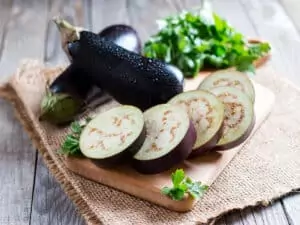
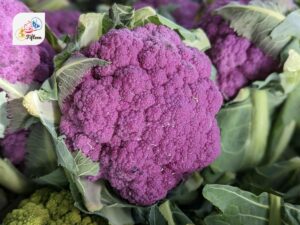
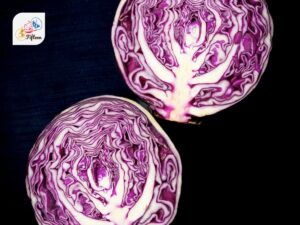
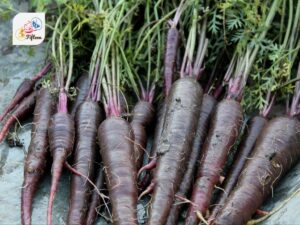
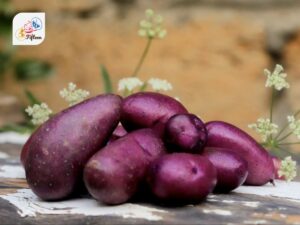
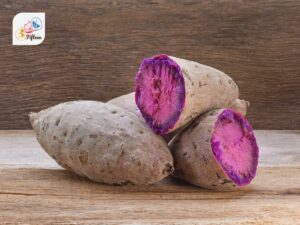
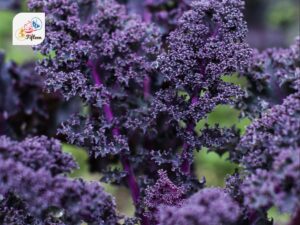
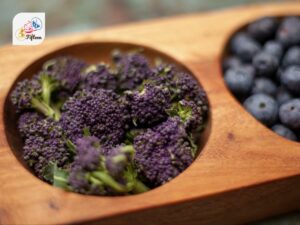
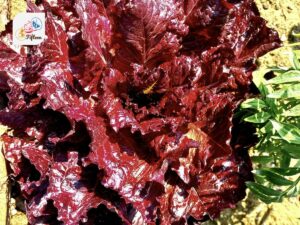
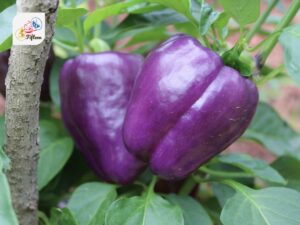
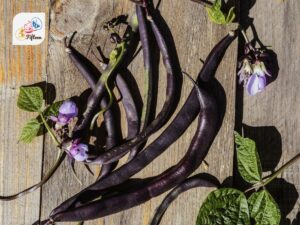
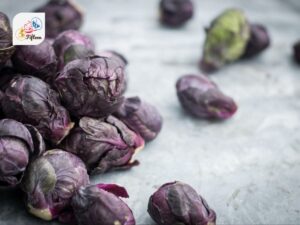
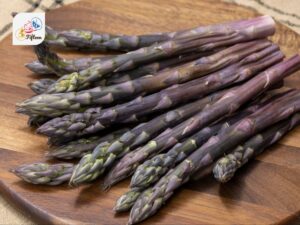
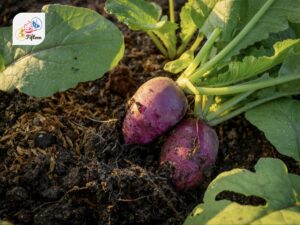
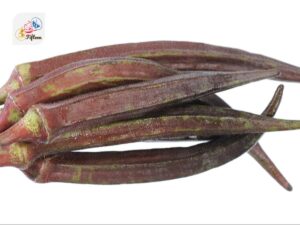
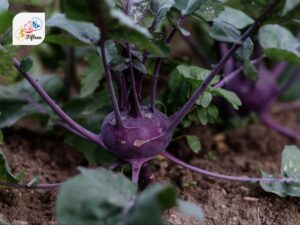
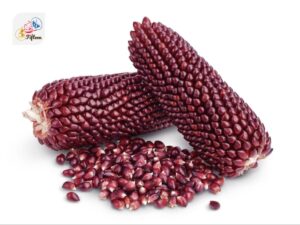
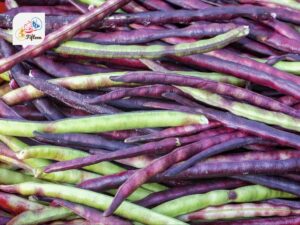
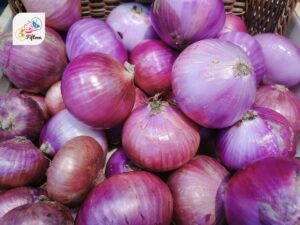
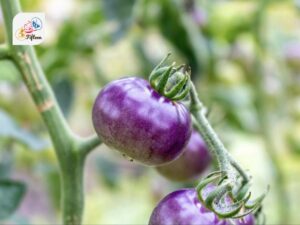
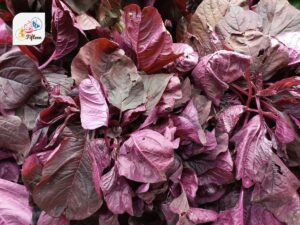
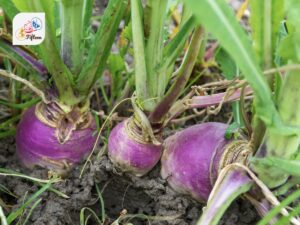
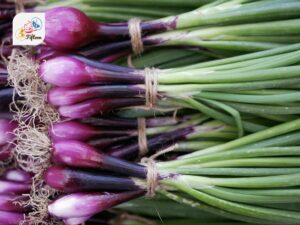
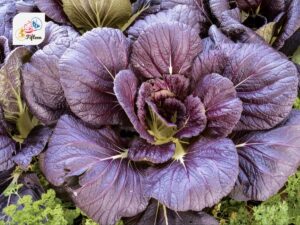
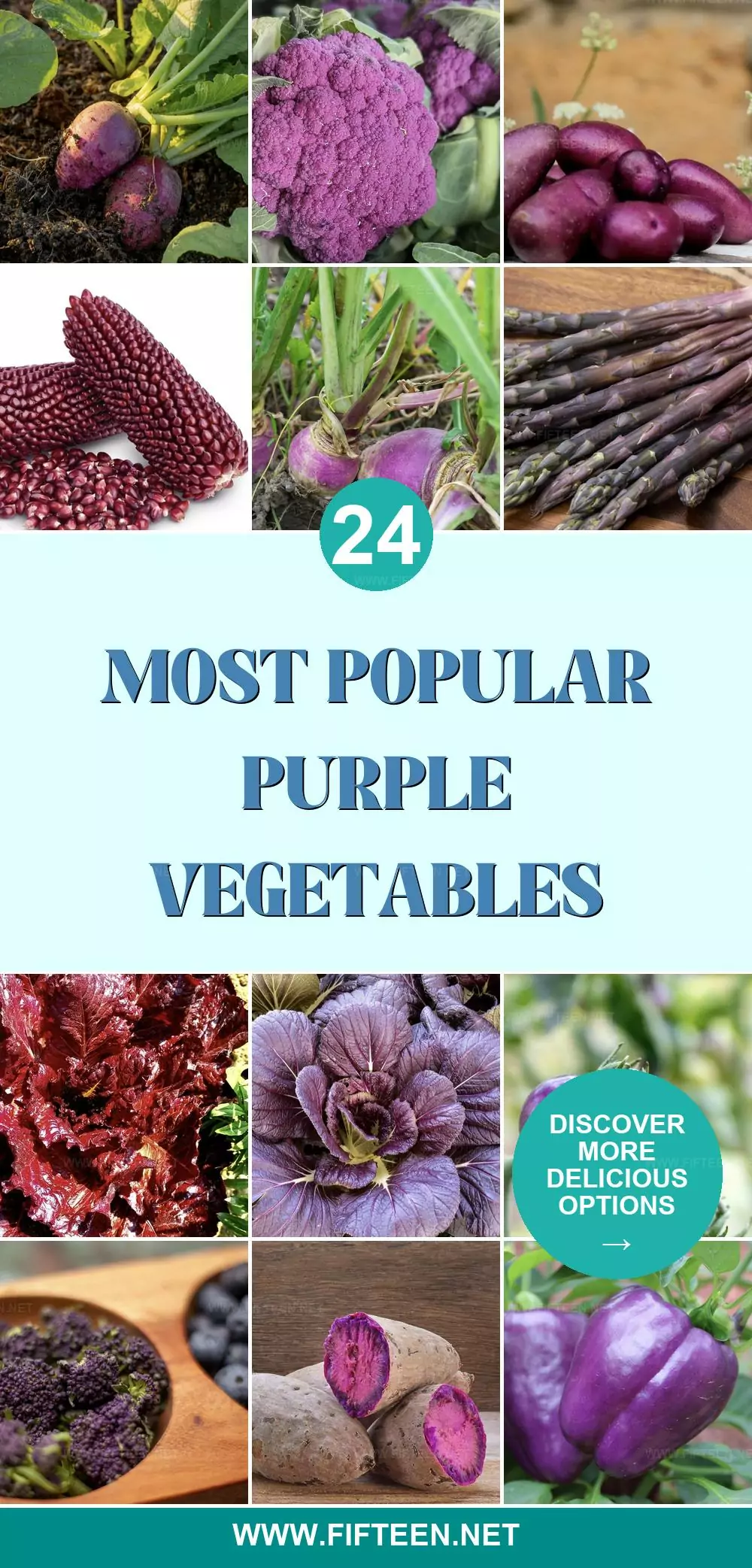
Jamie Scott
Editor in Chief, Senior Content Writer
Expertise
Home Cooking, Meal Planning, Recipe Development, Baking and Pastry, Food Editor, Cooking-video Maker, Western Food Evaluation Expert
Education
Le Cordon Bleu College of Culinary Arts
Local Community College, New York, NY
Jamie Scott is a skilled culinary expert and content creator specializing in Western cuisine. With over 15 years in the culinary field and formal training from Le Cordon Bleu, Paris, Jamie deeply understands how to blend nutrition with delicious flavors. His passion for cooking matches his commitment to making healthy eating accessible and enjoyable.
On Fifteen.net, Jamie brings a fresh perspective to classic dishes and beverages, offering readers insightful recipes, cooking tips, and a fresh view on meal planning that emphasizes taste, health, and simplicity.